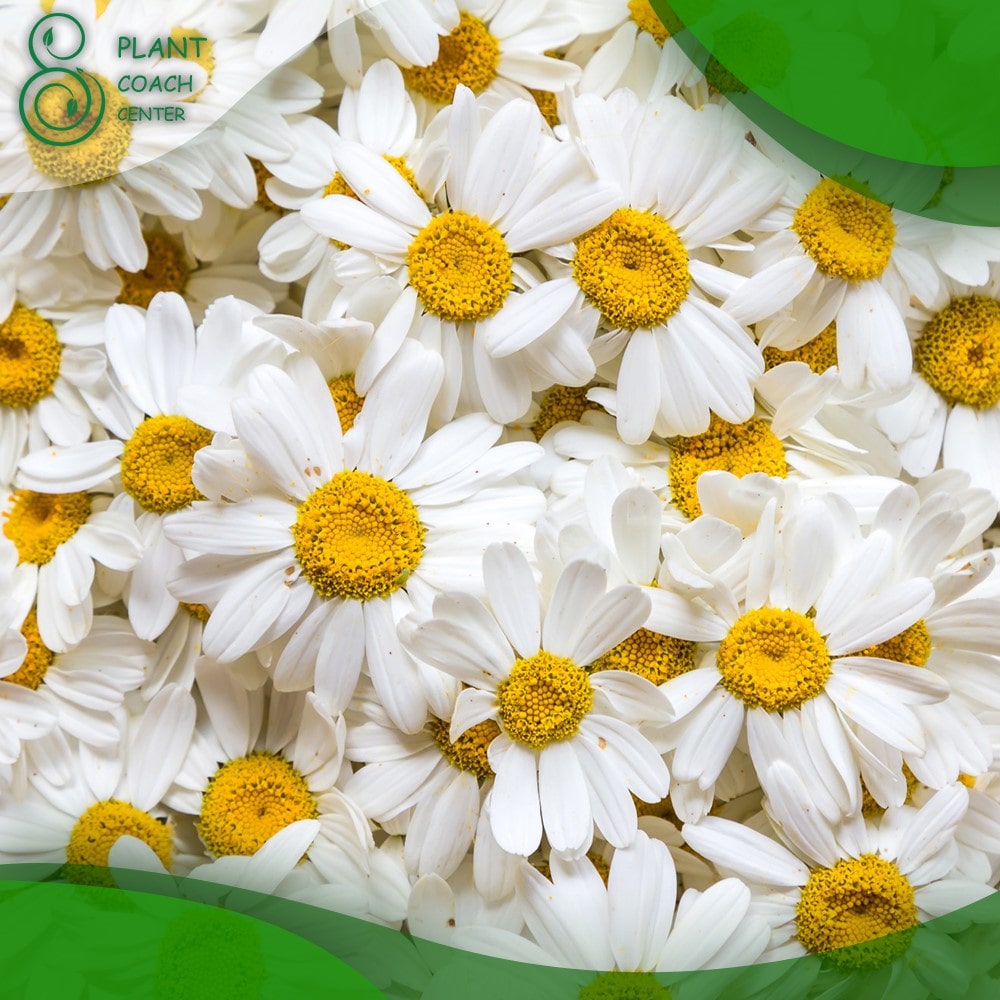When to Cut Back Daisies for Winter
Daisies, with their charming and vibrant blooms, are a beloved addition to many gardens and landscapes. As the cold winter months approach, it becomes crucial to understand the proper care and pruning techniques to ensure the health and longevity of these delightful flowers.
In this comprehensive guide, we will explore everything you need to know about when and how to cut back daisies for winter.
The Beauty of Daisies
Daisies, scientifically known as Asteraceae, are a diverse group of flowering plants that belong to the family Asteraceae. Their distinctive appearance with a central disc surrounded by ray-like petals gives them a captivating charm. Some common varieties include:
- Shasta Daisies (Leucanthemum x superbum): Recognized by their large white petals and yellow centers, these daisies are popular in gardens worldwide.
- African Daisies (Arctotis spp.): Native to South Africa, these daisies come in a wide range of colors, adding a splash of vibrancy to any landscape.
- Oxeye Daisies (Leucanthemum vulgare): Often seen in meadows and natural settings, these wild daisies have a timeless appeal.
Understanding Winter Dormancy
During the winter, daisies undergo a period of dormancy, a natural state of slowed growth and reduced metabolic activity. This dormancy helps them conserve energy and survive the harsh winter conditions. Proper pruning plays a crucial role in preparing daisies for this period and promoting healthy growth in the following spring.
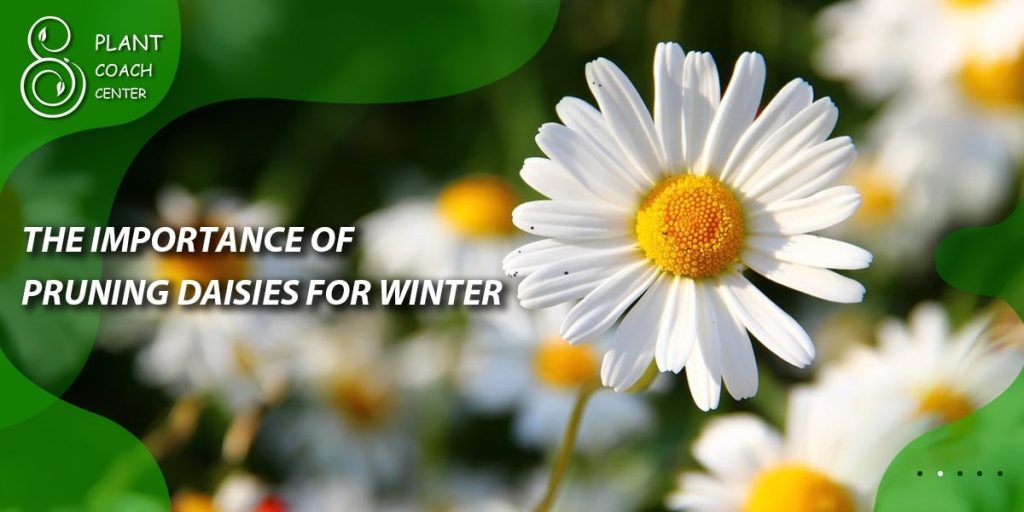
The Importance of Pruning Daisies for Winter
Pruning is an essential practice for any gardener or plant enthusiast, and daisies are no exception. Proper winter pruning offers several benefits:
- Promoting Health and Growth: Pruning encourages air circulation and sunlight penetration, reducing the risk of fungal diseases and ensuring healthier, more vigorous growth.
- Enhancing Winter Hardiness: By removing dead and weak growth, daisies can direct their energy towards developing stronger roots, increasing their resilience to winter cold and frost.
Identifying Different Daisy Varieties
Understanding the specific characteristics and growth habits of different daisy varieties is crucial for effective pruning and winter care. Here are some common daisy species:
Common Daisy Species
- Shasta Daisies (Leucanthemum x superbum): Recognized by their large white petals and yellow centers, these daisies are popular in gardens worldwide.
- African Daisies (Arctotis spp.): Native to South Africa, these daisies come in a wide range of colors, adding a splash of vibrancy to any landscape.
- Oxeye Daisies (Leucanthemum vulgare): Often seen in meadows and natural settings, these wild daisies have a timeless appeal.
Specific Traits and Growth Habits
- Perennial vs. Annual Daisies: Understanding the lifecycle of daisies is crucial, as pruning requirements may differ between perennial and annual varieties.
- Size and Spreading Habit: Some daisies are compact and clumping, while others may spread vigorously. Knowing their growth habit helps in planning pruning strategies.
Observing Seasonal Changes in Daisies
Recognizing Signals for Pruning
As the seasons change, daisies exhibit certain visual cues and behaviors that indicate the need for pruning. Observing these signals is essential for timing the pruning process correctly:
- End of Blooming: When daisy blooms begin to fade and wither, it’s a clear indication that they are nearing the end of their growing season and preparing for dormancy.
- Yellowing Leaves: Yellowing or browning leaves are common signs of aging and may indicate that the plant is diverting resources to its roots in preparation for winter.
Understanding Daisy Growth Cycles
To effectively plan the pruning schedule, it’s essential to have a solid grasp of daisy growth cycles:
- Spring Growth: Daisies begin their growth in the spring, producing fresh green foliage and developing flower buds.
- Summer Blooms: During the summer, daisies bloom in full splendor, attracting pollinators and adding beauty to the landscape.
- Autumn Preparation: As autumn approaches, daisies start to wind down their growth and prepare for winter dormancy.
Best Time to Start Cutting Back Daisies
Factors Influencing Timing
The timing of daisy pruning is influenced by various factors, including:
- Climate Zone: Different climate zones experience varying degrees of cold, affecting the timing of winter dormancy for daisies.
- Daisy Variety: Perennial and annual daisies have different pruning requirements based on their lifecycles.
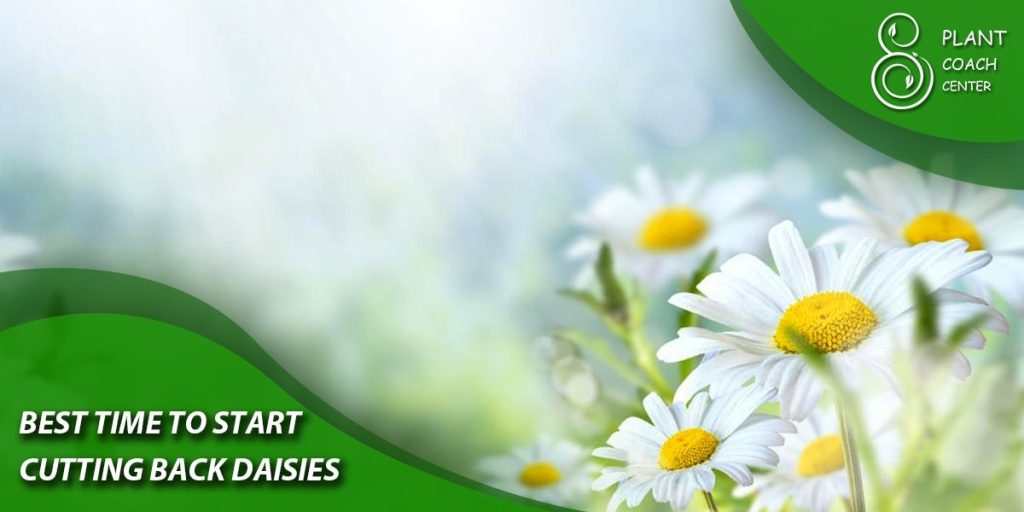
Assessing Regional Climate Variations
Understanding your specific region’s climate and average first frost date is crucial in determining when to start cutting back daisies for winter. By knowing the average onset of colder temperatures, you can better prepare your daisies for the dormant period.
Preparing Daisies for Winter Dormancy
Removing Spent Blooms
Before the onset of winter, it’s essential to deadhead daisies, which involves removing spent blooms. Deadheading not only improves the appearance of the plant but also encourages more energy to be directed towards root development.
Addressing Pest and Disease Issues
To ensure your daisies have the best chance of surviving winter successfully, address any pest infestations or diseases that may have developed during the growing season. Pests and diseases can weaken the plants and make them more susceptible to winter damage.
Tools and Techniques for Pruning Daisies
Choosing the Right Pruning Equipment
Using the correct tools for pruning is essential to minimize damage to the plants and promote proper healing. Some common pruning tools include:
- Pruning Shears: Ideal for smaller stems and delicate flowers.
- Loppers: Suitable for thicker stems and branches.
- Pruning Saw: Used for larger, woody growth.
Pruning Methods for Different Daisy Types
Different daisy varieties require specific pruning techniques. Here’s a general overview of pruning methods for common daisies:
- Shasta Daisies: Cut back the spent flower stems to the base of the plant, and trim any leggy growth.
- African Daisies: Trim back the plants to remove dead flowers and promote bushier growth.
- Oxeye Daisies: Trim back the plants to remove spent flowers and cut back the foliage to ground level.
Step-by-Step Guide to Pruning Daisies
Proper pruning is essential for preparing daisies for winter dormancy. Follow this step-by-step guide to ensure you perform the task correctly:
Step 1: Preparing the Plants for Pruning
Before you start pruning, gather the necessary tools and equipment. Ensure your pruning shears, loppers, or pruning saw are clean and sharp to make clean cuts without damaging the plants.
Step 2: Assessing the Growth
Carefully inspect each daisy plant, looking for signs of spent blooms, yellowing leaves, and any signs of pest or disease infestation. Note any areas that require pruning.
Step 3: Deadheading Spent Blooms
Begin by deadheading the spent blooms. Cut back the flower stems to just above the nearest set of healthy leaves. This will encourage the plant to redirect its energy towards root growth.
Step 4: Trimming Leggy Growth
If you notice any leggy or straggly growth, trim it back to encourage a more compact and bushier form. Make clean cuts just above a leaf node to promote new growth from that point.
Step 5: Removing Diseased or Damaged Parts
Identify any diseased, damaged, or dead parts of the plant. Trim these sections back to healthy tissue, ensuring the disease or damage doesn’t spread further.
Step 6: Cutting Back the Foliage
For perennial daisies, cut back the foliage to a few inches above the ground. This allows the plant to focus on root development during the winter months.
Step 7: Applying Winter Mulching and Protection
After pruning, apply a layer of mulch around the base of the daisies. Mulching helps retain soil moisture and acts as insulation against temperature fluctuations during winter.
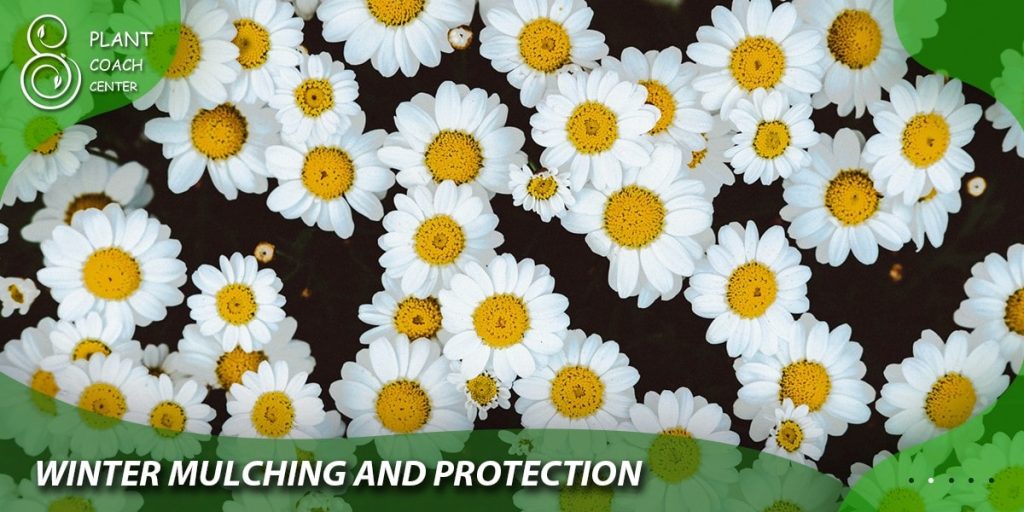
Winter Mulching and Protection
Understanding Mulching Benefits
Mulching is a valuable practice during the winter months. Some benefits of winter mulching include:
- Temperature Regulation: Mulch helps stabilize soil temperatures, preventing extreme fluctuations that can harm the plant’s roots.
- Moisture Retention: Mulch acts as a barrier, reducing water evaporation from the soil and providing essential moisture during dry winter periods.
- Weed Suppression: Mulch helps suppress weed growth, keeping the area around the daisies tidy and free from competing plants.
Best Mulching Practices for Daisies
Follow these best practices when mulching daisies for winter:
- Mulch Thickness: Apply a layer of mulch 2-4 inches thick around the daisies, but avoid piling it against the plant’s stems.
- Mulch Material: Use organic mulches such as straw, dried leaves, or wood chips, as they gradually break down and enrich the soil.
Overwintering Potted Daisies
Indoor vs. Outdoor Overwintering
Potted daisies require special attention during the winter, as they are more vulnerable to temperature extremes. Decide whether you will overwinter them indoors or outdoors based on your climate and the daisy variety.
Winter Care for Container-Grown Daisies
For daisies kept indoors during winter:
- Indoor Placement: Choose a location with bright, indirect light and moderate temperatures for indoor overwintering.
- Watering: Water the potted daisies sparingly during winter, allowing the soil to dry slightly between waterings.
- Fertilizing: Avoid fertilizing during the winter months, as daisies enter a period of dormancy.
For daisies overwintered outdoors:
- Insulation: Wrap the pots with insulating material or move them to a sheltered location, protecting them from freezing temperatures.
- Mulching: Apply a thick layer of mulch around the pots to provide added protection from cold.
Avoiding Common Pruning Mistakes
Pruning Dos and Don’ts
While pruning is beneficial, it’s crucial to avoid common mistakes that could harm the daisies:
- DO: Use sharp and clean pruning tools to make precise cuts.
- DO: Make cuts just above a leaf node or bud to encourage new growth.
- DON’T: Prune too early in the fall when the plant is still actively growing.
- DON’T: Leave behind diseased or damaged plant material, as it may spread infection.
Dealing with Pruning Challenges
Pruning daisies can present challenges, such as dealing with overgrown or tangled growth. When faced with these challenges:
- Assess the Plant: Evaluate the daisy’s overall health and structure before making drastic cuts.
- Prune Gradually: If dealing with overgrown daisies, prune them back in stages over time to minimize stress on the plant.
Preparing Daisies for Spring Growth
Unveiling Dormant Daisies
As winter gives way to spring, daisies will start emerging from their dormant state. With proper care, you can ensure a healthy and vibrant return of these beloved flowers:
- Remove Winter Mulch: Once the danger of frost has passed, gently remove the winter mulch from around the daisies, allowing them to receive ample sunlight.
- Prune Dead or Damaged Growth: Inspect the plants for any remaining dead or damaged growth from winter and prune it back to healthy tissue.
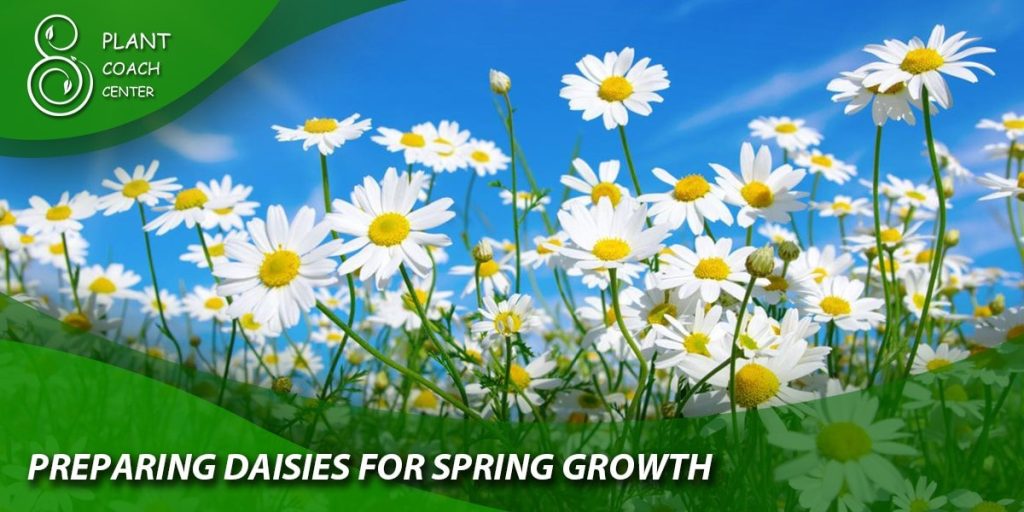
Providing Post-Winter Care
As your daisies wake up from their winter dormancy, they’ll need some extra care to kickstart their growth:
- Watering: Resume regular watering, ensuring the soil remains consistently moist but not waterlogged.
- Fertilizing: Apply a balanced, slow-release fertilizer to provide essential nutrients for healthy growth.
- Monitoring New Growth: Keep an eye on the new growth for any signs of pests or diseases and address them promptly.
Troubleshooting Common Daisy Problems
Pest Infestations and Management
Daisies, like any other plants, can fall victim to pests. Common pests that may target daisies include aphids, spider mites, and slugs. Here’s how to manage these infestations:
- Natural Predators: Encourage beneficial insects like ladybugs and lacewings to control aphid populations.
- Hosing off Pests: Use a strong stream of water to dislodge aphids and spider mites from the plants.
- Handpicking Slugs: If slugs are present, handpick them and relocate them away from the daisies.
Diseases and Preventive Measures
Fungal diseases such as powdery mildew and root rot can pose challenges to daisies. Preventive measures are essential to minimize disease incidence:
- Spacing: Plant daisies with adequate spacing to promote airflow, reducing the risk of fungal infections.
- Watering: Avoid overhead watering, as wet foliage can facilitate the spread of fungal spores.
- Fungicides: In severe cases, apply fungicides following the manufacturer’s instructions.
Reviving Unhealthy Daisies After Winter
Assessing Winter Damage
Despite your best efforts, some daisies may experience significant winter damage. Here’s how to assess and address the situation:
- Inspecting the Plants: Carefully examine each daisy for signs of severe winter damage, such as blackened stems or no new growth.
- Testing for Life: Scratch the bark of stems; if you see green tissue, the plant is still alive and may recover.
Steps to Encourage Recovery
Help your daisies bounce back from winter damage with these steps:
- Pruning Dead Material: Cut back all dead and damaged growth to healthy tissue, promoting new growth from the base of the plant.
- Optimal Conditions: Ensure the daisies receive proper sunlight, water, and nutrients to aid their recovery.
Winter Pruning for Different Growing Zones
Pruning Guide for Cold Climates
Gardening in cold climates requires special attention to winter pruning:
- Early Pruning: In colder zones, consider pruning slightly earlier in the fall to give daisies more time to prepare for winter.
Winter Care in Mild Climates
For gardeners in mild climates, follow these guidelines for winter pruning:
- Pruning Timing: In regions with mild winters, you can still follow the general winter pruning guidelines, focusing on promoting root development.
Daisies in Frost-Free Regions
Understanding Year-Round Care
In frost-free regions, daisies may not undergo traditional winter dormancy:
- Continuous Bloom: Daisies in such climates might continue to bloom year-round.
- Adjusting Pruning: Adjust your pruning schedule and techniques to match the growth patterns of daisies in frost-free regions.
Addressing Unique Challenges
Frost-free regions may face challenges like excessive heat and pests year-round:
- Shade and Watering: Provide some shade during extreme heat and ensure adequate watering.
- Pest Management: Consistently monitor for pests and adopt preventive measures.
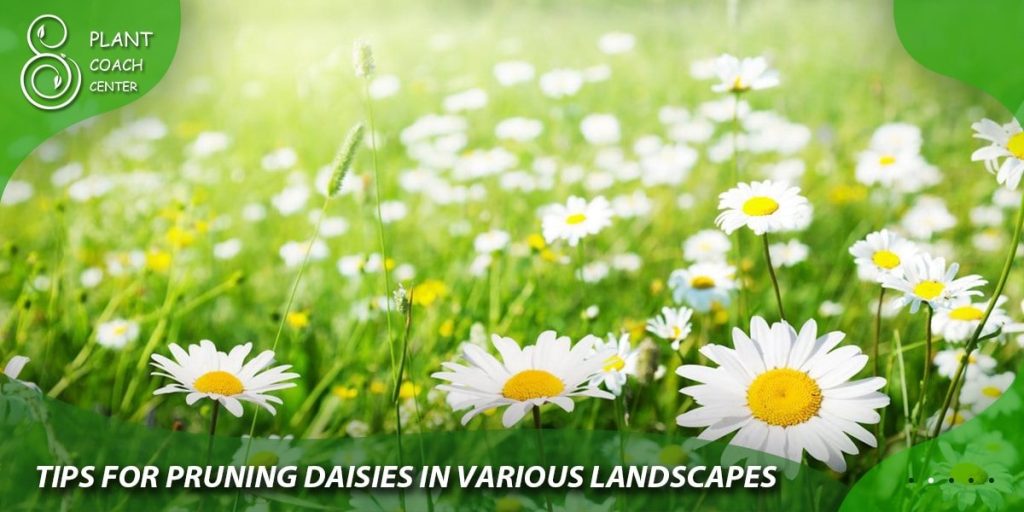
Tips for Pruning Daisies in Various Landscapes
Gardens and Flower Beds
Pruning daisies in gardens and flower beds requires attention to overall aesthetics:
- Deadheading for Aesthetics: Regularly deadhead spent blooms to maintain a neat and attractive appearance.
- Selective Pruning: Trim back any overgrown or leggy growth to keep the plants bushy and compact.
Daisies in Wildflower Meadows
In wildflower meadows, daisies can create a beautiful naturalistic display:
- Natural Look: Allow daisies to grow more freely in wildflower meadows, embracing their natural form.
- Meadow Management: Use selective mowing or cutting to manage the overall meadow and avoid aggressive daisy takeover.
Other Winter Care Considerations
Watering and Hydration in Winter
Maintaining proper hydration is essential, even in winter:
- Watering Frequency: Reduce watering frequency during the dormant period, but do not let the soil completely dry out.
Protecting Daisies from Winter Elements
Shield your daisies from extreme weather conditions:
- Frost Protection: Cover delicate daisies with frost blankets or cloth during frosty nights.
- Windbreaks: Use natural or artificial windbreaks to protect daisies from strong winds.
Daisies in Folklore and Culture
Symbolism of Daisies in Different Cultures
Daisies have significant symbolism in various cultures:
- Innocence and Purity: In many cultures, daisies symbolize innocence, purity, and new beginnings.
Historical Uses of Daisies in Traditional Medicine
Daisies have a rich history of traditional medicinal use:
- Healing Properties: Historically, daisies were used to treat various ailments, including digestive issues and wounds.
Conclusion
In conclusion, knowing when to cut back daisies for winter is essential for promoting their health and ensuring a vibrant return in the spring. By understanding the different daisy varieties, observing seasonal changes, and following proper pruning techniques, gardeners can successfully navigate the challenges of winter care for these delightful flowers. Whether in cold climates, mild regions, or frost-free areas, daisies can thrive with proper care and attention throughout the year. Embrace the beauty and symbolism of daisies while appreciating their historical significance in cultures and traditional medicine. So, prepare your daisies for the winter months ahead and enjoy the rewards of a flourishing garden in the coming spring. Happy gardening!
When should I cut back daisies for winter?
Start pruning daisies in late fall, after they have finished blooming.
How do I protect daisies from winter frost?
Use frost blankets or cloths to cover daisies during frosty nights.
Can daisies survive in frost-free regions?
Yes, in frost-free regions, daisies can thrive year-round with proper care.


